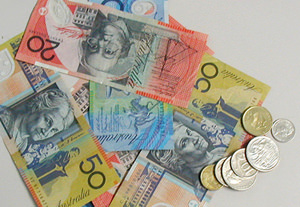This year Valentine’s Day, as well as being a day for lovers, also marked 50 years since the introduction of decimal currency. DAVID ADAMS takes a look at back at how it all began…

|
PICTURE: Tracey Pearce-Jordan/www.freeimages.com |
This month marks the 50th anniversary of the introduction of decimal currency to Australia, so we thought we’d take a look back at the arrival of dollars and cents.
Currency Day, also known as “C-Day”, actually fell on Valentine’s Day – 14th February, 1966 – and it was on that day that, as “Dollar Bill” sang in a song leading up to the changeover: “In come the dollars and in come the cents; To replace the pounds, the shillings and the pence”.
The introduction of the new currency followed a education campaign which run for several years and the fact that we now use dollars and cents in Australia was not a foregone conclusion – other suggested names included everything from the “austral” to the “emu” but the initial proposed name, backed by then PM, Sir Robert Menzies, was the “royal”. Not a popular choice, it was later dropped in favour of the dollar.
The notes were initially issued in $1, $2, $10 and $20 denominations with the $5 added in 1967, the $50 in 1973 and the $100 in 1984. All, with the exception of the $1 note, which had the portrait of Queen Elizabeth II on one side and Aboriginal artwork on the other, featured images of people prominent in Australia’s history.
The $1 note was withdrawn with the release of the $1 coin in 1984 and the $2 note with the release of the $2 coin in 1988 but biggest revolution took place when polymer notes were issued in place of paper notes in a move aimed at thwarting counterfeiting (the first polymer note was a $10 note issued in 1988 to mark Australia’s bicentenary with the bulk of them rolled out between 1992 and 1996).
The Reserve Bank of Australia has announced that a new generation of banknotes will commence rollout in September this year with the release of a new $5 note. RBA Governor Glenn Stevens has said the notes will come with a range of new security features and include a “tactile” feature to help the vision impaired differentiate between denominations. Key features of the existing notes – such as the people depicted on them – will remain but each note will also feature a different species of Australian wattle (and, in another nod to the wattle, the notes will first be issued on 1st September – National Wattle Day).
Decimal coins, meanwhile, were first issued by the Royal Australian Mint in denominations of one, two, five, 10, 20 and 50 cents (until 1969, the 50 cent coins were round and not the 12-sided shape they now are) with the $1 coin introduced in 1984 and the $2 coin in 1988. All of the original coins – and the first $1 coin – featured native animals designs by Stuart Devlin while the $2 coin, which featured an Aboriginal man and Southern Cross, was designed by Horst Hahne. But there have also been special commemorative issues of various coin denominations released into general circulation over the years.
Both the one cent and two cent coins were withdrawn from circulation from February, 1992, and there is now talk of withdrawing the five cent piece.
The Mint, meanwhile, is issuing a special series of coins into general circulation which will mark the 50th anniversary – it is the first time five and 10 cent coins will have been issued with special commemorative designs.
Sources: Royal Australian Mint, Reserve Bank of Australia, SMH, ABC
FOR MORE OF ORIGINS CLICK HERE…
If you have something you’d like to know the origins of, simply send an email to [email protected].





